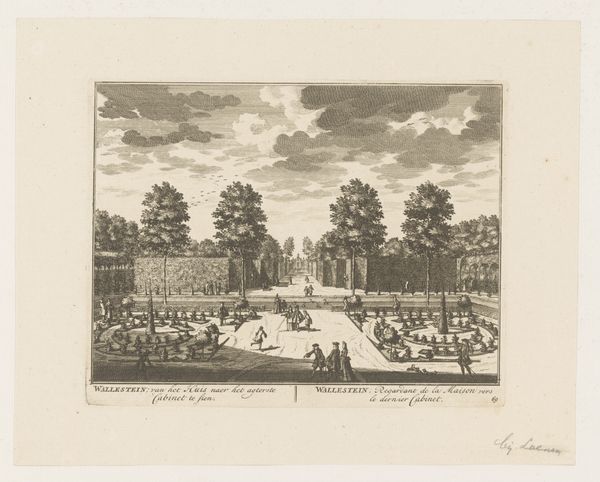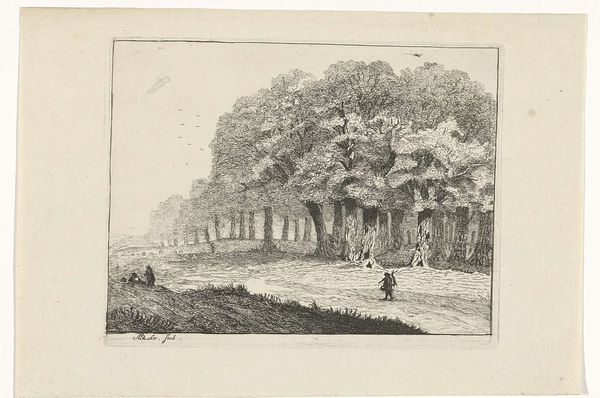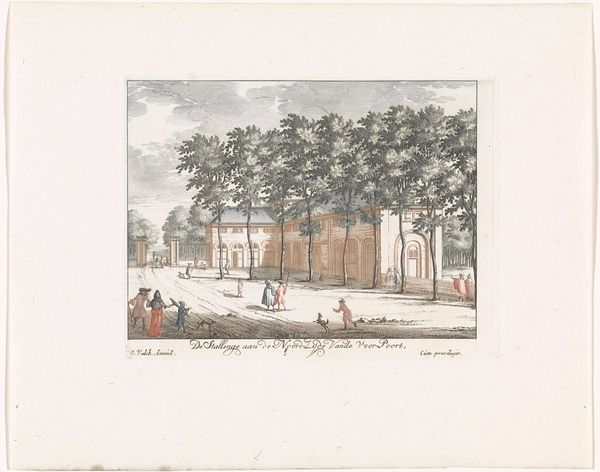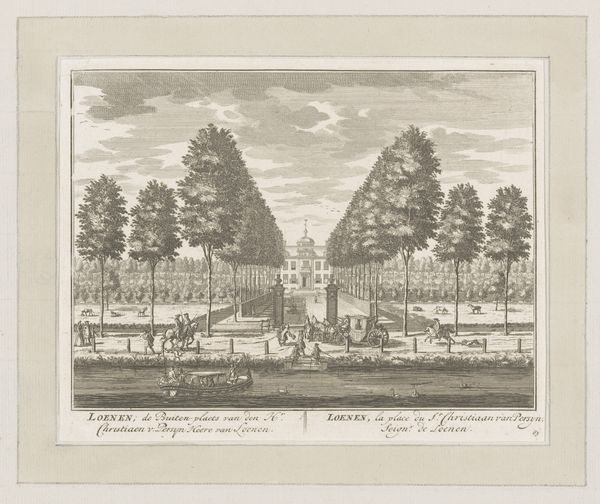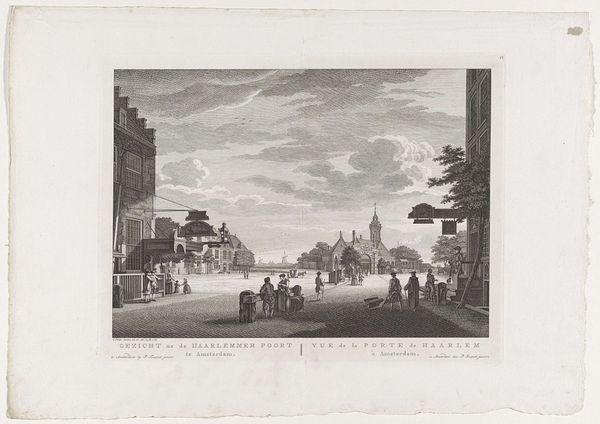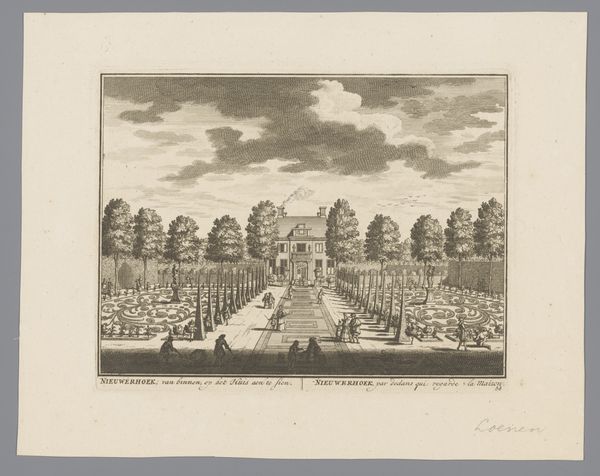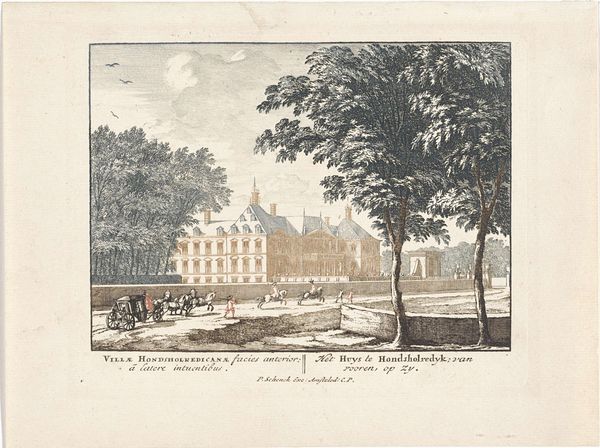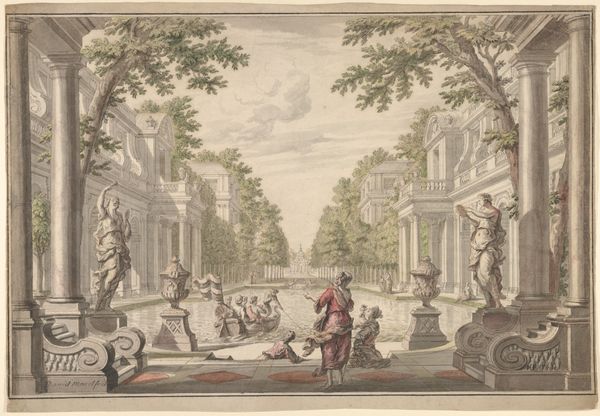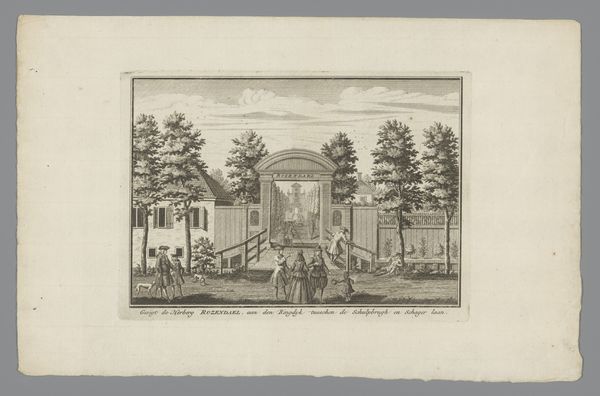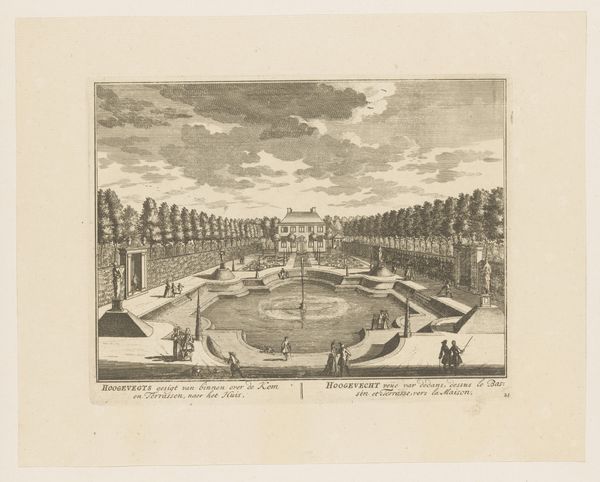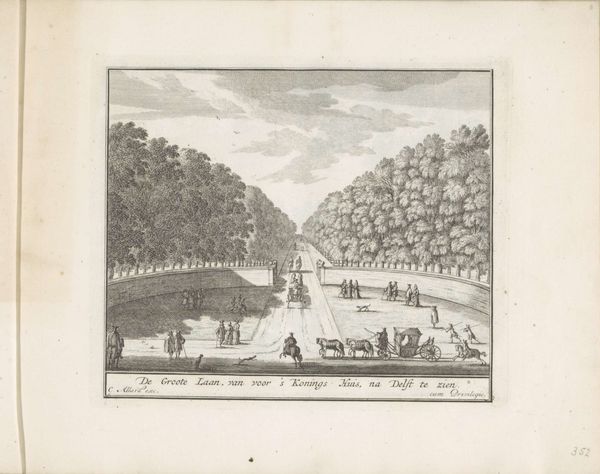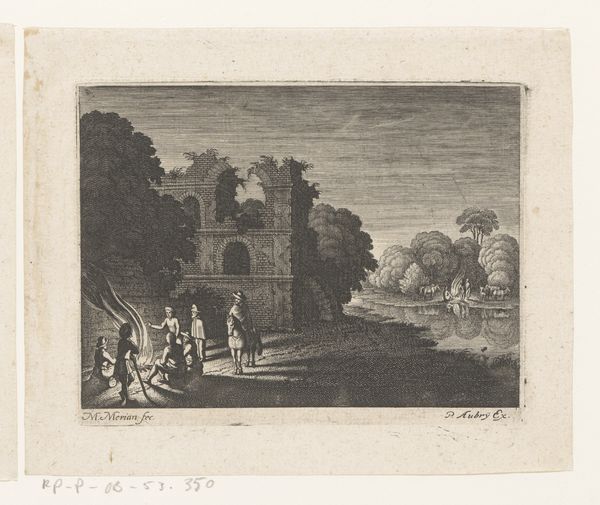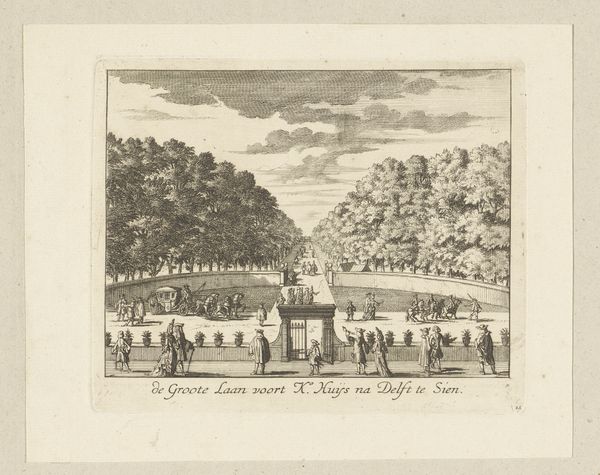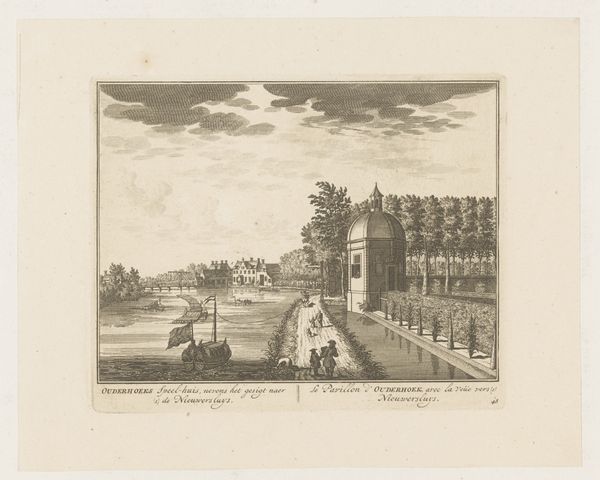
print, etching
#
baroque
# print
#
etching
#
landscape
#
cityscape
#
genre-painting
Dimensions: height 130 mm, width 170 mm
Copyright: Rijks Museum: Open Domain
Curator: An etching like this offers a direct line to understanding 17th-century Dutch society through its material reality. Editor: This etching, "View of the Gate of Soestdijk Palace" from 1695, shows figures enjoying the grounds. It's delicate but gives a strong sense of the space. I'm curious, what stands out to you? Curator: The fact that it's a print is crucial. Etchings are relatively inexpensive to produce. It suggests a desire to disseminate this image widely. Who would have been the consumers of this scene? Were they aristocrats wanting to celebrate their lifestyle or a broader middle class, perhaps aspiring to it? Editor: That’s an interesting point. I hadn’t considered the economics of printmaking. I was more focused on the landscape and the people depicted. So, is the materiality suggesting that we consider a wider audience for these kinds of images? Curator: Precisely. We should also consider the labour involved. Who was the artist? Were they part of the aristocracy themselves, or were they commissioned? The repetitive act of creating multiple prints connects it to labor practices of the era, the networks and power dynamics. Does it romanticize a leisurely lifestyle or subtly comment on it? Editor: Thinking about it as a product, and who it was for, definitely gives a richer sense of context to what's depicted in the artwork. Thank you for making that more clear. Curator: Of course! Material analysis challenges us to go beyond the surface and explore the social underpinnings of art.
Comments
No comments
Be the first to comment and join the conversation on the ultimate creative platform.
